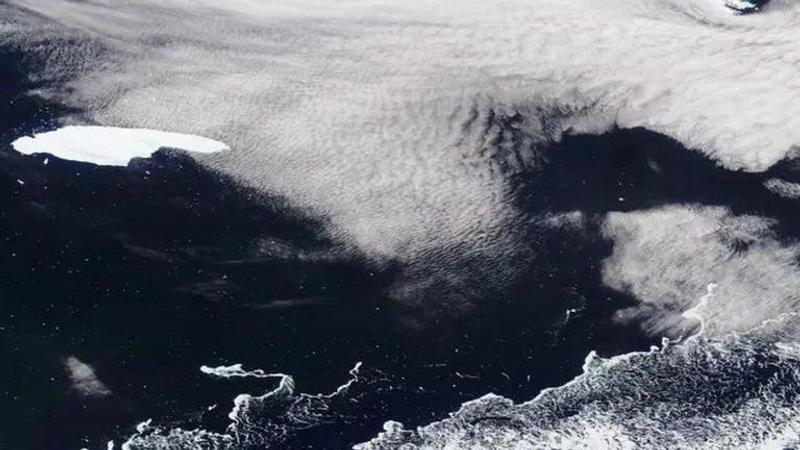Published 08:19 IST, December 4th 2020
World's biggest iceberg found in dreaded condition with parts 'cracking'
World's biggest iceberg, 94 miles (151 km) long is now on a collision course as it is drifting toward South Georgia, a remote island in the Atlantic Ocean.

World’s largest iceberg about 94 miles (151 km) long and 30 miles (48 km) wide that broke from the Larsen C Ice Shelf on the Antarctic Peninsula has been found to be in a dreaded condition, with parts cracking and sailing away. Iceberg A68A, constantly battered by the gigantic waves, has been severed with cracks and surface dents. The block is now on a collision course as it is drifting toward South Georgia, a remote island in the Atlantic Ocean. Currently, the berg sits in the austral Southern Hemisphere.
According to Christopher Readinger of the US National Ice Center, the A-68A is on a path that umpteen icebergs have taken previously, however, the Delaware-sized block gained spotlight when it started to drift towards the British Overseas Territory posing threat to the wildlife, flora, and fauna. In the imagery captured by American polar-orbiting weather satellite Noaa-20, the iceberg with “hundreds of billions of tons” of mass had floated into “Iceberg Alley.” In a report published by Earthsky, the remote sensing and polar ice scientist at Brigham Young University, David Long, said that more than 90 percent of all Antarctic icebergs floated towards South Atlantic Ocean from the Weddell Sea. What makes A-68A special is that it survived the journey from the Weddell to South Georgia, while most bergs don’t. The massive size of the iceberg helped it survive the warm, iceberg-killing water of the South Atlantic.
[Photo shows the iceberg A68a drifting in the South Atlantic between Antarctica and South Georgia. Credit: NASA]
Can get stuck, or 'grounded'
According to Christopher Readinger of the US National Ice Center, the turbulent currents of the water and the wind gusts had been spinning and revolving around the ocean entity for over months. Ans there’s a possibility that the iceberg could become stuck, or “grounded” if it hits the island. Or worse, the humungous berg, upon hitting the shore could be foraging routes of penguins and seals. However, some scientists believed that the berg might get caught in the vortex in ocean currents to the east of the island and might be pulled back into a reverse journey. However, others believe that if the block of one moves past South Georgia, it might just shatter into smaller pieces too small for US National Ice Center scientists to track down.
Updated 08:19 IST, December 4th 2020




